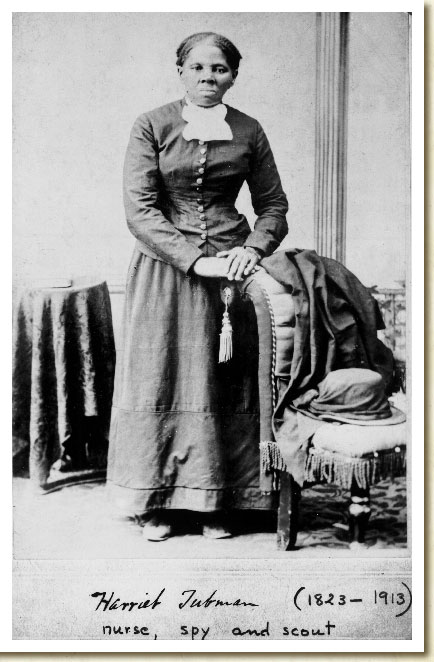 Hope you all had a good Spring Break! This week’s reading, listed on the schedule, is about Harriet Tubman. Be sure that you download both of the Sernett PDFs from OWL-Space. (Please note that I’ve slightly amended the syllabus, so you are only required to read the Sernett articles.)
Hope you all had a good Spring Break! This week’s reading, listed on the schedule, is about Harriet Tubman. Be sure that you download both of the Sernett PDFs from OWL-Space. (Please note that I’ve slightly amended the syllabus, so you are only required to read the Sernett articles.)
Here are the reading prompts: pick ONE and write a response to it in your Google Doc for this week. I’d encourage you to revisit the Learning Rubric and the Google Doc we made collaboratively before the break (see links in the sidebar) to refresh your memory of what to work on in your responses!
- Milton Sernett argues that what a society chooses to tell its children about the past offers one of the best measures of what that society values and/or thinks worth remembering. Do you agree? If so, what does children’s literature about Tubman reveal about us?
- Sernett quotes Michael Kammen as saying that “what history and memory share in common is that both merit our mistrust, yet both must be nevertheless nourished” (p. 8). Do you agree with that generalization? If so, what parts of the histories that have been written about Tubman or her times merit mistrust? Which parts of the public memories of her merit mistrust? Which parts of the history or memory about her must nevertheless be nourished?
- How much influence did Tubman have over the making of her own legend?
- How many excursions did Tubman make back into the South to rescue slaves, and how many slaves did she ultimately help to escape North? Does getting the figures exactly right matter?
- Which image of Tubman do you think is more well-known today: Tubman as “Moses” or “General Tubman” the rifle-toting Civil War scout? Based on your reading of the material in Sernett, what accounts for the relative popularity or prevalence of these images?
Image credit: Photograph of Harriet Tubman, 1860s-1870s, from the Documented Rights exhibit at the National Archives.

